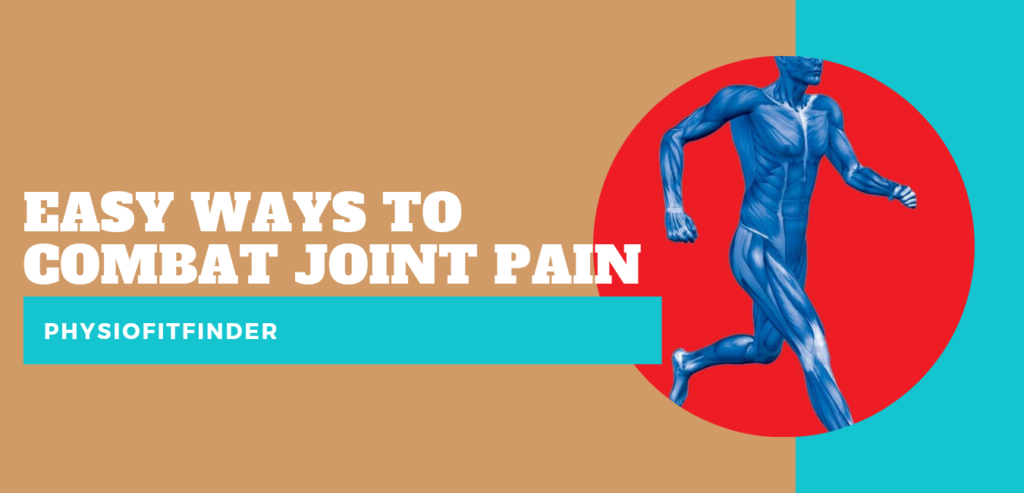Joints are the connection between our bones in the body which link the skeletal system into a functional whole. Above all joints allow the bones to move.
Joint pain refers to physical discomfort, soreness, increase in local temperature or stiffness. It is a common complaint and may last briefly or it may be chronic.
CAUSES OF JOINT PAIN
Joint pain can be because of conditions such as overuse of joints, any injury or sprain. Other causes may be traumatic injury, inflammation, autoimmune disease or chronic degenerative conditions.
Arthritis
Arthritis is the most common cause of joint pain. Osteoarthritis (OA) and Rheumatoid arthritis (RA) are the main forms of arthritis.
According to the American College of Rheumatology, OA is most common in adults over age 40. It progresses slowly and tends to affect commonly used joints like wrists, hands, knee, hips.
Pain results from a breakdown of the cartilage which serves as a cushion and shock absorber for the joints.
The second form of arthritis is RA. According to the Arthritis Foundation, RA affects about 1.5 million Americans but women are more affected than men.
It can deform and debilitate the joints over time. RA causes pain, inflammation, and fluid buildup in the joints as the body’s immune system attacks the membrane that lines the joints.
OTHER CAUSES OF JOINT PAIN
There are several basic causes for joint pain, which can include:
- Older age: As your age increases the cartilage in your joints start to deteriorate, so aches and pains are more likely to occur
- Overuse of the joints: due to performing excessive repetitive movements.
- Poor posture attained by the body
- Injuries, impact or trauma
- Inactivity or Sedentary lifestyle, such as sitting for many hours per day
- Autoimmune disorder that increases inflammation, for example Ankylosing Spondylosis or fibromyalgia.
Sign and Symptoms
Symptoms and signs associated with joint pain can include:
- Joint noise (clicking, popping, crackling)
- Joint Redness
- Reduced mobility (range of motion of the joint)
- Joint Stiffness
- Joint Swelling
- Visible deformity of the affected joint
- Joint warmth
Diagnosis
A thorough medical history is necessary to diagnosing the cause of your pain. Along with this, your doctor will conduct a comprehensive physical examination and, in some cases may order a blood test or imaging test. Certainly, a joint X-ray is necessary to identify arthritis-related joint damage.
TREATMENT FOR JOINT PAIN
Home treatment
There is no treatment available that will completely eliminate the joint pain associated with arthritis or keep it from returning. But, there are ways, we can manage the pain:
- Firstly, use topical pain relievers or non-steroidal anti-inflammatory drugs to reduce pain, swelling, and inflammation.
- Secondly, stay physically active
- Thirdly, maintain ideal body weight to lessen stress on your weight bearing joints
- In addition, do stretches to maintain good range of motion in your joint.
Hot and Cold Packs
For immediate joint pain relief, rest the painful area and try a hot-and- cold approach to manage the pain. Hot therapeutic gel pack should be applied for three minutes and then cold ice pack for another one minute. Repeat the same for 4-5 times twice daily.
Movement & Exercise
Exercising regularly can help strengthen and stretch the affected joints and muscles, improving circulation and often reducing pain.The stronger your muscles and joints become, the better chance you have of staying active without dealing with pain. However, this is helpful for preventing weight gain that can add pressure to sore joints.
Diet Modifications
By implementing an anti-inflammatory diet, joint pain caused by inflammation and swelling will likely start to decrease. Omega-3 fatty acids found in foods, for example cold-water fish, chia seeds and walnuts are great for helping to lower inflammation in the body. Fresh fruits and vegetables are loaded with antioxidants that flow the effects of aging. Avoid processed foods, trans-fats and added sugars, as these can cause severe inflammation in the body.
Golden Milk
Milk and Turmeric : Turmeric milk (aka Golden Milk) helps to reduce inflammation, joint pain and boosts the immune system. On the other hand it is a powerfully anti-inflammatory & nourishing beverage packed with antioxidants.
Medical treatment
Your treatment options will depend on the cause of the pain. In many cases, your joint pain can be managed by lifestyle changes or medications. But there are few cases where joint replacement surgery is suggested. Above all, Physiotherapy treatments are very effective in combating joint pain.

Pingback: Know the reason of your knee pain - Physiofitfinder
Pingback: How to deal with Obesity - Physiofitfinder
Pingback: Things which help for better gait analysis - Physiofitfinder
Pingback: Cupping therapy and its benefits - Physiofitfinder
Pingback: Physiotherapy and its effect on chronic pain management - Physiofitfinder
Pingback: 7 HERBS USEFUL IN JOINT PAIN - Physiofitfinder